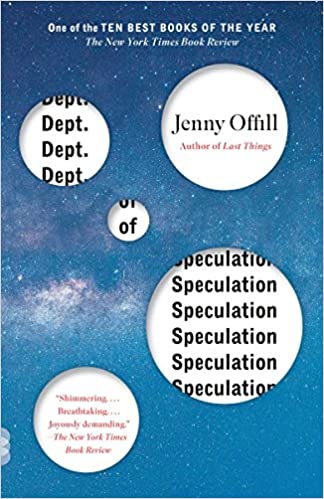by Nancy Crisafulli
Ingredients
From Mother’s Expansive Garden
1 cup low-cal self-esteem
For correct blend mix equal parts shame, blame and overripe guilt.
2 cups shredded body image
Tear fresh images into bite-sized pieces, rinse under cold water and drain completely.
8 oz. night-blooming tobacco
Steep tobacco in 7-14 oz of any red wine (see directions below).
1 lb. depressed family history
This ingredient may also be found in Father’s garden and is often mistaken for a bothersome, invasive weed.
From Daughter’s Secret Pantry
1 cup high-concentrate anxiety – Use full strength – do not dilute.
2 cups well-seasoned perfectionism – Straight A+ seasoning is preferred, but type A will also work.
4 oz. flowering fear of failure (FFF)
Note: FFF is a bitter herb that will significantly impact the flavor of your stew -remember, a little goes a very long way.
2 lbs. genetic predisposition – This underrated ingredient can be found at many organic stores including Roots and MoMs Organic Market).
Optional Non-Organic Ingredients
7 Tbsp. expectation to excel in all endeavors (EEE)
EEE grows like a wildflower in suburbia so check your backyard before purchasing.
Multiple shots of reprocessed Insta-Selfies – Adjust lighting, filters, angles and number of shots for maximum impact.
Directions
Step 1:
In medium-sized bowl, carefully combine mother’s low-cal self-esteem and shredded body image with daughter’s undiluted anxiety. Mix thoroughly.
*Mother: To be sure ingredients are thoroughly blended, pinch and knead the fatty area behind your knee (or any other unattractive body part) repeatedly while chatting heart-to-heart with your adolescent daughter. Adding this personal touch is guaranteed to work better than the most efficient KitchenAid.
Step 2:
Macerate night-blooming tobacco in red wine and let soak in a tub until all liquid is absorbed.
*Daughter: While Mother macerates, use a paring knife or other sharp object to make shallow cuts in your flowering fear of failure. Cover carefully with a dry cloth and store in a cool, dark place.
Step 3:
In a separate bowl, sift together mother’s depressed family history with daughter’s genetic predisposition. Do this slowly, alternating just a bit of depressed history with a little predisposition until you have the perfect mix of these secret family ingredients.
Step 4:
Place all prepared items from mother’s garden and daughter’s pantry into the domestic cooking device of your choice (see side bar for choices). Sprinkle freely with non-organic optional ingredients to taste and cook as directed.
Step 5:
Serve piping hot with a side of solitude and regret.
Sans appétit!
Tip
For a less robust stew, slowly introduce one or more tempering agents (Wellbutrin, Ativan, Lexipro) before the stew is fully cooked. See individual packaging for suggested amounts.
Yield
This recipe serves 1-2 but, properly stored, its prolonged shelf life can often under-nourish an entire family for generations! Studies have shown that a sustained diet of this popular stew is almost guaranteed to yield the following:
Daughter
- Drastic reduction in calories and fat
- Grinding, obsessive exercise
- A feast of secrecy and self-loathing
- Suicidal thoughts and/or actions
Mother
- Growing dread of family meals
- Searing, wild remorse
- Frantic weeding of personal garden
- Ravenous craving for a shared bowl of daughter’s favorite childhood ice cream
Chef’s Note:
Organic vs Non-Organic? Conventional wisdom suggests that our genes and the environment around us play important parts in the development of eating disorders and other chronic diseases. For people recovering from anorexia, bulimia or other EDs during this pandemic, the combined ingredients of Corona-related stress, grief, lack of structure, and social isolation may be the perfect recipe for relapse.
If you or someone you know is struggling with an eating disorder, please reach out:
National Eating Disorders Association (NEDA)
https://www.nationaleatingdisorders.org/help-support
Academy for Eating Disorders
https://www.aedweb.org/expert-directory
National Alliance on Mental Health Illness (NAMI)
https://www.nami.org/About-Mental-Illness/Mental-Health-Conditions/Eating-Disorders/Discuss

Nancy Crisafulli received her BA in English Literature from the University of Maryland and spent the next forty years in the field of instructional design in and around Washington, DC. She did most of that writing in a corporate office. Her other writing has been languishing in her spare bedroom and recently asked to move out. A few of those pieces have been published in Under the Gum Tree and The Sun. When she isn’t writing, Nancy is probably out walking, doing yoga, playing with the grands, or on the co-ed softball field with her husband and best friend, Frank.
~~~~~~~~~~~~~~~~~~~~~~~~~~~
Although each of Jenny Offill’s books is great, this is the one we come back to, both to reread and to gift. Funny and thoughtful and true, this little gem moves through the feelings of a betrayed woman in a series of observations. The writing is beautiful, and the structure is intelligent and moving, and well worth a read.
Order the book from Amazon or Bookshop.org
~~~~~~~~~~~~~~~~~~~~~~~~~~~
Anti-racist resources, because silence is not an option
~~~~~~~~~~~~~~~~~~~~~~~~~~~





